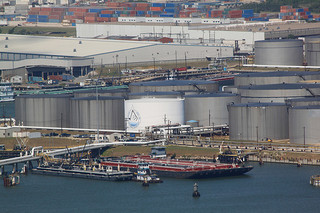 Ocean carriers have benefited much from reducing fuel costs, but this strategy will not keep them in business for the long term, says Drewry Maritime Research.
Ocean carriers have benefited much from reducing fuel costs, but this strategy will not keep them in business for the long term, says Drewry Maritime Research.
Shipping lines have been hyping in their financial reports for the first half of 2013 how much they have cut from their bunker expenses, which can amount for as much as 60 percent of all voyage costs.
Orient Overseas Container Line reported that its average fuel price in the first quarter was 9 percent less compared to the same period of 2012, and that its overall fuel cost saving was 4.4 percent.
Hapag-Lloyd said its average fuel price was 8 percent lower, and that bunker consumption also declined. APL’s bunker consumption is reported to have been reduced by 16 percent, while its average price fell by 10 percent.
Maersk Line said its bunker cost in the second quarter of the year was US$1.3 billion, or 23 percent of all operating costs, down 31 percent than in the same period last year. This was achieved through reducing bunker consumption by 18 percent, and a 15 percent decrease in average bunker price.
Drewry said that with market conditions likely to remain difficult for at least another year, cost cutting will remain a priority for shipping lines. But it warned that ocean carriers have already gained enormously from bunker price reductions over the past two years, and are unlikely to see the same again. This, it added, means that “either other costs will have to be cut, or further slow steaming introduced.”
Carriers are also resorting to increasing economies of scale, as seen by the large number of vessels of over 10,000-TEUs (20-foot-equivalent units) on order. As many as 36 vessels averaging 14,000 TEUs can be up for delivery next year, followed by a further 33 vessels averaging 15,600 TEUs in 2015.
As most will be deployed on the Asia-North Europe trade lane, this will further increase the average size of its vessels, said Drewry.
Should fuel prices rise, ocean carriers will continue to soften the blow through increased economies of scale right up to the end of 2015, even though this will worsen excess vessel capacity in the industry.
“It should be noted that the excess capacity is what has been causing freight rates to collapse in the first place,” warned Drewry.
Photo: roy.luck




